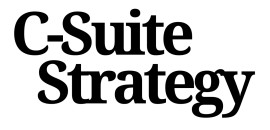
Understanding the fundamentals of siop planning
Building Blocks of SIOP: What Every Leader Needs to Know
Strategic leadership starts with a clear grasp of the Sales, Inventory, and Operations Planning (SIOP) process. At its core, SIOP is about synchronizing sales forecasts, demand planning, supply chain, and operations planning to drive business performance. This process is not just about balancing supply and demand; it’s about aligning resources, inventory, and production plans with the broader business strategy.
Understanding the fundamentals of SIOP means recognizing how each element—sales, inventory, operations, and planning—interacts to support customer service and optimize working capital. Effective SIOP planning connects demand signals from customers with supply capabilities, ensuring the right products are available at the right time while minimizing excess inventory and reducing costs.
- Sales forecasts provide the foundation for demand planning and inventory management.
- Inventory operations ensure that resources are allocated efficiently across the supply chain.
- Operations planning aligns production with both current and anticipated demand, supporting agile decision making.
- Data-driven processes enable leaders to make informed decisions, anticipate market shifts, and respond proactively.
Implementing SIOP is not a one-time event; it’s a continuous process that requires ongoing management, regular review of forecasts, and cross-functional collaboration. By integrating SIOP into business planning, leaders can improve inventory levels, enhance customer service, and strengthen the entire supply chain.
For a deeper dive into how SIOP planning fits within a long-term business vision, explore this guide on crafting a visionary three-year strategy.
Aligning siop planning with corporate vision
Translating Vision into Actionable SIOP Plans
Strategic leadership demands that SIOP (Sales, Inventory, and Operations Planning) is not just a tactical process but a core driver of business alignment. The challenge is to ensure that SIOP planning is tightly woven into the fabric of the corporate vision, so every plan and forecast supports long-term objectives. To achieve this, leaders must bridge the gap between high-level strategy and day-to-day operations. This means translating broad ambitions into actionable SIOP processes that guide demand planning, inventory management, and resource allocation. Here are key considerations:- Connect SIOP to Strategic Goals: Every SIOP cycle should begin with a clear understanding of the company’s vision and strategic priorities. This ensures that sales forecasts, inventory levels, and production plans are not just reactive but proactive, supporting growth and resilience.
- Align Resources and Capabilities: Effective SIOP planning requires a realistic assessment of available resources across the supply chain. This includes evaluating production capacity, working capital, and supply chain flexibility to ensure that operations planning can support both current and future demand.
- Integrate Data-Driven Insights: Leveraging accurate data is essential for aligning SIOP with business strategy. Data-driven decision making enables leaders to identify gaps between forecasts and actuals, adjust plans in real time, and optimize inventory operations for customer service excellence.
- Foster Cross-Functional Accountability: SIOP is most effective when sales, operations, finance, and supply chain teams are aligned around shared objectives. Regular reviews of sales forecasts, demand supply balances, and inventory plans help maintain focus on strategic outcomes.
Ensuring SIOP Delivers on Corporate Ambitions
When SIOP planning is fully aligned with the corporate vision, it becomes a catalyst for sustainable growth. This alignment empowers organizations to:- Balance inventory levels with demand forecasts, reducing excess and shortages
- Enhance customer service by ensuring the right products are available at the right time
- Optimize working capital and improve overall supply chain efficiency
- Support agile decision making in response to market and operational changes
Navigating cross-functional collaboration
Building Bridges Across Functions for Effective SIOP
Successful SIOP planning depends on more than just robust data or advanced demand forecasts. It requires seamless cross-functional collaboration. When sales, operations, supply chain, finance, and customer service teams work in silos, the SIOP process loses its power to drive business results. Instead, integrating these functions ensures that sales forecasts, inventory levels, and production plans are aligned with actual demand and supply realities.
- Unified Goals: Cross-functional teams must share a common understanding of business objectives. This means aligning sales operations with inventory management and demand planning, so that everyone is working toward the same targets.
- Transparent Communication: Regular, structured meetings—supported by clear data—help teams surface issues early. This transparency is key to adjusting plans and managing resources efficiently.
- Integrated Data Flows: Centralizing data from sales, inventory, and operations planning enables better decision making. When everyone has access to the same forecasts and performance metrics, it’s easier to respond to changes in demand or supply constraints.
For example, when sales teams provide accurate sales forecasts, operations can adjust production and inventory levels to meet customer needs without overcommitting working capital. Likewise, supply chain and inventory operations can flag potential disruptions, enabling proactive risk management and resilience building.
Implementing SIOP as a truly cross-functional process also helps break down barriers between departments. It encourages a culture where teams collaborate to solve problems and optimize the entire value chain, not just their own KPIs. This approach is essential for companies aiming to enhance customer service, improve inventory turnover, and drive sustainable business growth.
For more on how transformative leadership can enable this level of collaboration, explore the role of a transformative CEO in modern business strategy.
Leveraging data for informed decision-making
Building a Data-Driven SIOP Process
In today’s competitive landscape, leveraging data is no longer optional for effective SIOP planning. Data-driven decision making transforms how organizations manage sales, inventory, and operations planning, ensuring that every plan is grounded in reality and aligned with business goals.
- Integrating Data Across Functions: SIOP thrives on cross-functional collaboration, but it’s the integration of data from sales, operations, supply chain, and finance that unlocks real value. By consolidating demand forecasts, inventory levels, and production plans, leaders gain a holistic view of the business.
- Enhancing Forecast Accuracy: Accurate sales forecasts and demand planning are critical. Utilizing historical data, market trends, and real-time customer insights helps refine forecasts, reducing the risk of stockouts or excess inventory. This directly impacts working capital and customer service levels.
- Optimizing Inventory Management: Data analytics enable more precise inventory management. By monitoring inventory operations and supply chain performance, companies can adjust inventory levels proactively, balancing supply and demand while minimizing costs.
- Supporting Agile Decision Making: With robust data, leadership teams can quickly identify shifts in demand or supply constraints. This agility is essential for effective business planning and resource allocation, especially when implementing SIOP in dynamic markets.
Key to success is not just collecting data, but ensuring its quality and relevance. Regularly reviewing data sources, validating inputs, and fostering a culture of transparency around data usage are essential steps. When data becomes the backbone of the SIOP process, organizations are better equipped to manage risk, build resilience, and drive sustainable growth.
Managing risk and building resilience
Building Resilience into Your SIOP Process
Effective SIOP planning is not just about balancing demand and supply. It is also about preparing your business to withstand disruptions and adapt to changing market conditions. In today’s volatile environment, risk management and resilience are essential for maintaining customer service, protecting working capital, and ensuring business continuity.- Scenario Planning: Integrate scenario planning into your SIOP process. By modeling different demand and supply situations, you can stress-test your plans and identify vulnerabilities in your supply chain, inventory levels, and production schedules.
- Data-Driven Risk Assessment: Use data from sales forecasts, inventory management, and operations planning to assess risks. Regularly review key metrics such as inventory turnover, customer service levels, and supply chain lead times to spot early warning signs.
- Agile Response Mechanisms: Develop flexible processes that allow your teams to quickly adjust plans when disruptions occur. This could mean reallocating resources, adjusting production, or revising sales and operations plans based on real-time data.
- Cross-Functional Collaboration: Encourage collaboration between sales, operations, and supply chain teams. Sharing information and insights across functions enables faster decision making and a unified response to challenges.
Optimizing Inventory and Working Capital
Managing risk is closely tied to how you handle inventory operations and working capital. Excess inventory can tie up resources, while shortages can damage customer relationships. A robust SIOP process helps you strike the right balance.- Align inventory levels with accurate demand planning and sales forecasts to avoid overstocking or stockouts.
- Leverage data-driven insights to optimize inventory management, reducing waste and improving cash flow.
- Monitor supply chain performance and adjust inventory policies as market conditions evolve.
Embedding Resilience into Business Planning
Resilience is not a one-time project. It requires ongoing attention and a commitment to continuous improvement. Regularly review your SIOP process, update your plans, and invest in training for your teams. By embedding resilience into your business planning, you can better navigate uncertainty and position your company for long-term success.Driving cultural change through siop planning
Embedding SIOP in Company Culture
Implementing SIOP is more than just a process upgrade; it’s a cultural shift that impacts every layer of the business. For strategic leaders, fostering a culture that embraces SIOP planning is essential for sustainable success. This means moving beyond traditional silos and encouraging a mindset where sales, operations, supply chain, and finance teams work together toward shared goals.
Key Drivers for Cultural Change
- Transparency: Open sharing of sales forecasts, demand planning data, and inventory levels builds trust and enables better decision making across departments.
- Accountability: Clear ownership of plans and results ensures that everyone understands their role in the SIOP process, from inventory management to production planning.
- Continuous Learning: Encouraging teams to use data-driven insights for ongoing improvement helps the business adapt to market changes and customer needs.
Practical Steps to Drive Engagement
- Host regular cross-functional meetings to review demand supply alignment, sales inventory status, and supply chain risks.
- Integrate SIOP metrics into performance management systems, linking individual and team goals to business planning outcomes.
- Provide training on using data and forecasts inventory tools, empowering teams to contribute to the SIOP process.
Benefits of a SIOP-Driven Culture
When SIOP becomes part of the company’s DNA, organizations see improvements in customer service, working capital efficiency, and inventory operations. Teams become more agile, responding faster to shifts in demand and supply. This cultural alignment supports better resource allocation, more accurate sales operations, and ultimately, stronger business results.
Embedding SIOP into the culture is a journey, not a one-time project. It requires ongoing commitment from leadership and a willingness to adapt as the business evolves. The payoff is a more resilient, responsive organization ready to meet the challenges of today’s dynamic markets.














